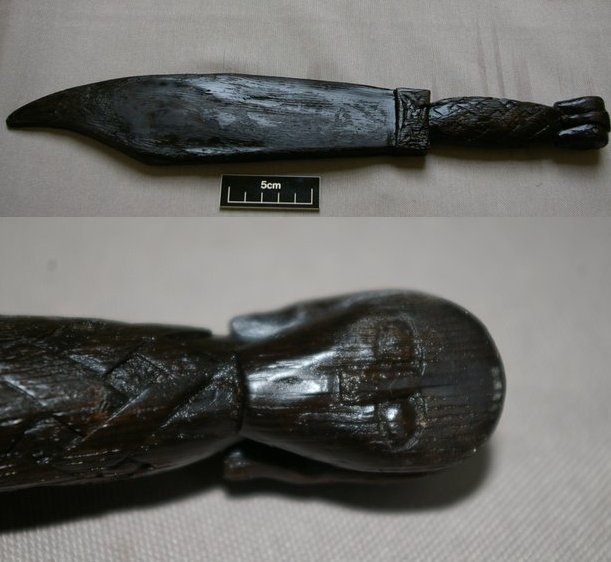

They were Amlaíb and Ímar, better known as Óláfr inn hvíti and Ívarr Hinn Beinlausi, the son of Ragnar loðbrókr, and brother of the Viking leaders in England. In 853, however, the situation changed for the Irish with the arrival of two new Viking leaders. The Irish won a number of battles in 848 that encouraged them to send a report of their victories to Charles the Bald, the Emperor of the Franks. For the next few years, the Viking occupation appeared to be on the back foot. At that time he was defeated in battle by the king of Mide and drowned in Lough Owel. Thorgest ruled in Dublin until his death in 845. The arrival of new Viking leaders change the luck of the Irish Later it would also serve as the base from which raids against the monastic towns of Armagh, Glendalough, and Clonmacnoise, among others, were launched. The longphort he built on the Lifey would eventually form the basis of the modern city of Dublin. They were responsible for the sacking of the fishing community of Dublin. These fleets, with nearly 3000 men between them, were led by a man named Thorgest (possibly Þorgísl or Þurgestr in Old Norse, also Turgéis in Irish and Turgestis in Latin). In 837, two such fleets attacked along the rivers Boyne and Lifey and plundered all along the rivers and into the kingdom of Brega. The riverine raids launched by the Vikings from these longphorts became larger and larger.ĭescribing these attacks there are reports of fleets of 60 ships or larger being made in the annals. This allowed raids along the north and south coasts of Ireland but, more importantly, allowed access to territories further inland. The first two known longphorts were at modern Annagassan and Dublin (Ó Corráin, p. Since 821, Viking attacks had begun to intensify and the raiders began establishing longphorts, or naval bases, along rivers and coastlines. The attack at Clondalkin was an important development in the history of Viking age Ireland. He routed them, but that same year the monastery at Clondalkin, near modern Dublin, was sacked. This weakening of the High King’s power was made even more evident by the fact that, in 833, High King Niall Caille was forced to lead an army against Viking raiders who had made themselves a base in Derry. It came to an end when the Uí Neílls were brought to a peace conference by Feidlimid.

The war between the two kings lasted from 820 until 827.
#VIKING LONGPHORT CORK MAC#
The king of Mumu, Feidlimid mac Crimthainn, began aggressively countering the High King’s expansion. The war between Mumu and the Uí Neíllĭespite the raids on other kingdoms, the Uí Neíll territories remained relatively peaceful, which allowed for the expansion of their power in the north and caused concern for other kings. It is one of the finest and most extravagant examples of illuminated Insular-style manuscripts. This monastery, located well inland, would eventually become the home of the Book of Kells. In 814, a new monastery at Kells was consecrated, as a way of protecting both the monks and the relics of St. The Vikings had an early, long-lasting effect on Irish culture at this point. The Vikings pillaged their way around the monastic centres outside of the Uí Neíll territories with seemingly little in the way of resistance. In 798 and 807, more raids – mainly along the coasts of Brega and Connachta occurred. The first recorded Viking raid in Ireland was in 795 when the monastery on Lambay was looted. Note: Unless otherwise noted, all dates are taken from the Annals of Ulster, the Annals of the Four Masters, and the Annals of Inisfallen The widely dispersed population, isolated monastic towns, and lack of standing armies meant that plunder could be easily taken without the worry of concentrated resistance. Militarily, Ireland also presented a tempting target for the Vikings. Ireland was unprepared and a tempting target The kingdoms of Connachta (Connaught,) Laigin (Leinster,) and Mumu (Munster,) were ruled independently, but were of lesser importance, politically, compared to the Uí Neíll.

The family dominated the northwestern and central eastern parts of Ireland, with the northern branch dominating much of the modern counties of Donegal, Fermanagh, Tyrone, Derry, Monaghan, and Cavan, while the southern branch controlled vast portions of the modern counties Meath, Westmeath and Offaly, and was considered to be High Kings of Ireland. Politically, Ireland was dominated by a single, major clan: the Uí Neílls.


 0 kommentar(er)
0 kommentar(er)
